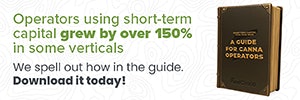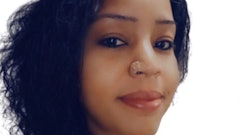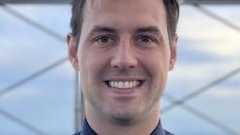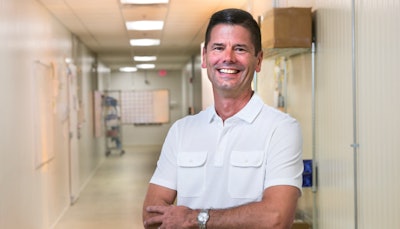
From the outskirts of Chicago, new life springs forth in Bedford Grow LLC’s 80,000-square-foot cultivation site. Each cannabis strain the company produces in the Bedford Park, Ill., facility starts from seed in a clean-room environment commonly found in traditional pharmaceutical manufacturing plants.
The company takes painstaking steps to ensure a sterile, contaminant-free cultivation operation to uphold its mission statement of maintaining “the highest standards of medical-grade cannabis development.”
The late Louis Dineff created the company in 2013 with his sister Laurel, who now serves as the primary owner. Dineff understood the need for medical cannabis. As he was suffering from stage 4 cancer, the state awarded him a cultivation license, says Paul Chialdikas, Bedford Grow’s vice president of sales and marketing.
“The family always saw the need for medicinal help in the state, and that’s why they chased it down. They weren’t looking at it for adult use,” Chialdikas says. “They saw it as truly a pharma need.”
Chialdikas recently spoke with Cannabis Business Times writer Jonathan Katz to discuss the company’s staffing strategy, Illinois’ strict regulations, how it handles compostable waste and more.
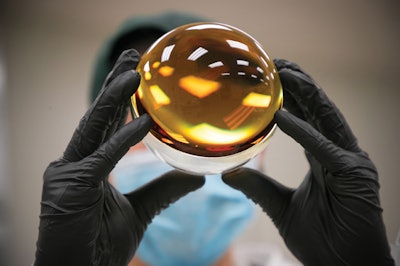
Jonathan Katz: Illinois is a relatively new market. What are some of the challenges you’ve encountered in this highly regulated environment?
Paul Chialdikas: The challenges have been the restrictiveness of the program. As a cultivator, we grow the product, and we also have to prepare the product—unlike other states where you grow and then you ship your flower to a processing center or you ship it to the dispensaries, and the dispensaries break it down to different sizes. So if you’re buying 100 eighths of a product, it has to be packaged here, sealed here and put in a special shipping container to bring to the dispensaries. If we’re making edibles or selling cartridges for oil or concentrates, it all must be produced in our facility, packaged [securely] and shipped to the site. Nobody else can break down the product after they receive it. It’s pretty tight, and it’s tedious on us as cultivators. It adds a lot more cost and labor to the process. But I feel very good about it because I know our patients are getting premium product that hasn’t been touched by many hands.
Katz: Because you mentioned it’s a tedious process, have you figured out any ways to ease that and make it more efficient?
Chialdikas: After evaluating our first harvest, we realized there were too many steps involved in the entire process from seed to packaging. The team sat down and determined how to streamline the process from the flowering table to the packaging department. There were many minor changes, some that are proprietary to our facility, that helped us realize a 20-percent improvement in our labor hours.
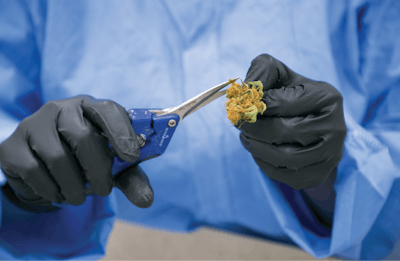
Katz: You mentioned that the state has a “tight seed-to-sale” program. Have you faced any challenges with inspections and compliance?
Chialdikas: The state didn’t issue any standard forms, and yet we have to track our inventory, crop inputs, waste disposal, product labels and more. There was no guidance from the state as to what those forms should look like, so we had to work with regulators over months of inspections to nail down the specific forms they wanted to see and that were practical for us to maintain.
Through trial and error, we created our own reporting system to the state. For example, every week we get a visit from a state inspector. He has a list of things that he wants to see. We had to establish the protocols and then present them back to him on a weekly basis. If he didn’t like it, we had to tweak the forms so he would walk away with all of the information he wanted.
The inspection is roughly a three- to five-hour visit. We have to dedicate one employee—who has full knowledge of the entire operation, including inventory, processing and what we’ve sold—to be with that inspector. We have to provide him with invoices and a label of each product because they want to document everything that’s been sold. He also watches our video cameras, so we have to keep 90 days of recordings of our more than 180 cameras on site locally and then another 90 days in the cloud. He sits in our security room for an hour and watches all the cameras and makes sure that people are following protocols.
Katz: Tell me about your integrated pest management program. How does it work, and what are the results, so far?
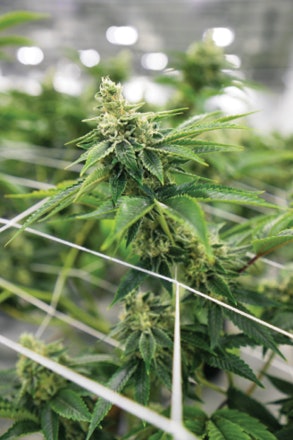
Chialdikas: When the program initially started, the state had a window of when you could bring your product in to get your facility started. A lot of our competitors brought in clones of product they wanted, so they could start immediate growth. We knew if we brought in outside product, we took a risk of introducing something to our facility. We knew it was going to cost us more money, but we knew the results were going to be a pest-free facility because we didn’t introduce anything but the medium that we were growing in.
We planted a little over 4,000 seeds and picked the best [phenotypes], so we could start producing mothers from those plants. That care has continued as every grow room is cleaned with a hydrogen peroxide solution after each harvest. Every two to three months, our grow rooms look as if they were never used before. And we take the extra expense during the waste disposal process to ensure no foreign material comes into the building. State law requires our plant material to be mixed with 51-percent non-cannabis compostable waste, and there is a lot of cheap material we could bring in to do that, but we also wouldn’t know what types of mites or insects might be on that cheap material. So we use soil we know to be clean of infestation [and that is purchased from a trusted supplier] to mix our plant waste. We take every measure possible to ensure no foreign invaders infiltrate our production areas.
Also, before you go into the actual grow area, you have to dress down … so we wear booties, full body suits, hair nets, gloves, face masks. The thought behind it is that we want a very sterile environment, and nothing gets introduced to that grow room. Every room gets sterilized by a team of cleaners after we turn it.
Katz: Tell me a little more about the non-cannabis compostable waste. What are the advantages of mixing cannabis waste with other material?
Chialdikas: The state authorized us to repurpose the growing medium into the compostable waste. In years past, we grinded down the plants before they were hauled away to comply with state requirements to make the product unusable. The process was inefficient because we had to dedicate one person to physically grind everything down. Also, cannabis is a strong material with a lot of oil in it, which would sometimes cause the machines to become clogged.
We were able to convince the state to allow us to mix the growing medium—which may be soil with crushed cocoa—with the cannabis waste to create compost. That benefits the environment and helps us be more efficient.
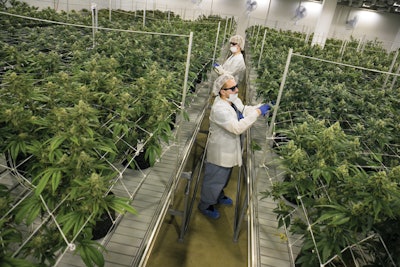
Katz: In addition to pest prevention, are there other benefits to growing from seed?
Chialdikas: To clarify, our first harvest was from seed, and we have bred some of our current strains to create more seeds and planted those, but generally from harvest to harvest we are cloning from mothers saved from our original seeds. ... It’s helped us create truly unique strains and to offer the best representations of common strains that are in the market. For example, we planted 117 Girl Scout Cookie seeds. After our first harvest, we narrowed those down to six potential mothers, and after a few test results, have now settled on one of those 117 phenotypes to be the mother we clone to sell Bedford Grow Cookies because it is the best representation of the Girl Scout Cookies strain and now it’s one of our best sellers. We also found Pheno #23 to be one of the most unique cannabis plants our director of cultivation has ever seen in his life.
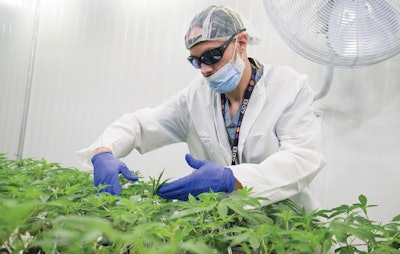
Katz: What makes Pheno #23 such a unique strain?
Chialdikas: It is almost neon lime-green and has virtually no red hairs at all. When it’s lined up with our other bins of product, the #23 appears to glow. Because it was Pheno #23, we’re in Chicago, and, like Michael Jordan, this pheno was 1 in 10 million, we named the strain #23. The proof that the product was truly unique was fully realized when state-authorized lab results showed high potency and terpene levels.
Katz: What would you consider to be your company’s greatest lesson learned since its inception?
Chialdikas: Staffing is probably the only thing we could have done differently. We could have ramped up a little faster when it came to staffing because it takes a long time to get IDs in the state of Illinois to work in a facility. When a person applies here, we then submit it to the state, you pay a fee and then [the applicant gets] fingerprinted. It’s lengthy. When we got close to the first harvest, we were ramping up as fast as we could, but we were held back by the state because it was taking a long time to get an ID card. If there’s one felony that pops up on a person’s background, they can’t work on the grow.
If there was one lesson, it’s that we have to be more proactive on the hiring process than reactive.
Katz: What does being more proactive mean when it comes to the hiring process?
Chialdikas: Starting the process earlier. We talk to departments in the facility and if anybody leaves for any reason, we talk to those managers and ask them about what their staffing situation looks like. Are you going to need to bring anybody on? Are you going to be OK for a year? There are a lot of questions asked in conversation so we don’t have to react.
Katz: What business decisions have had the greatest impact on sales and why?
Chialdikas: Our decision to start from seed has had the greatest impact on sales. We test all our strains in order to present to the patients the best cannabinoid profile and highest levels of terpenes.
Also, we have not changed since the day we started. We have stuck to our mission. I say that because everyone is fluctuating. Other growers don’t know if they want to stay on the medical side or if they want to be more rec-looking. They don’t know what they want to be yet. When we develop something, our founder wants the highest standards of that product.

